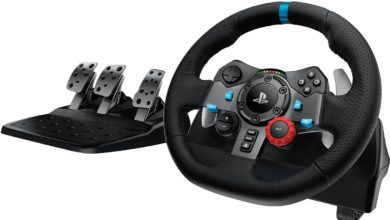PC Market Finishes 2015 As Expected, Future Hopefully Stable: IDC
Worldwide PC shipments totaled 71.9 million units in the fourth quarter of 2015 (4Q15), a year-on-year decline of -10.6%, according to the International Data Corporation (IDC) Worldwide Quarterly PC Tracker. Although total shipments were in line with already conservative expectations, the news nonetheless ended 2015 as the first year below 300 million units since 2008. The holiday quarter achieved a modest uptick compared to the third quarter, but the year-on-year decline in 2015 shipments was nevertheless the largest in history, surpassing the decline of -9.8% in 2013.
The PC market continued to face persistent challenges from longer-PC lifecycles and competition from mobile phones and tablets, despite the slowing growth in those markets. However, economic issues like falling commodity prices and weak international currencies, as well as social disruptions in EMEA and Asia/Pacific that disrupted foreign markets were a larger factor for 2015. Changes in the OS market also had a significant impact with the end of support for Windows XP and promotions of low-cost PCs driving a surge in replacements in 2014 that combined with the launch of Windows 10 and a free upgrade program to delay new system purchases in 2015. Lastly, while some very attractive new PCs have been launched, the market is taking some time to respond to new OS and hardware configurations – deciding when to upgrade and evaluating slim, convertible, detachable, and touch variations vs. more traditional PCs. Nevertheless, many of these products have received positive reviews and there’s potential for a faster commercial transition to Windows 10 in 2016 than we saw for prior versions of Windows.”
 “The PC market remains competitive and the economic environment weakened further with the recent drop in the Chinese stock market,” said Loren Loverde, IDC Vice President, Worldwide PC Tracker. “However, PC replacements should pick up again in 2016, particularly later in the year. Commercial adoption of Windows 10 is expected to accelerate, and consumer buying should also stabilize by the second half of the year. Most PC users have delayed an upgrade, but can only maintain this for so long before facing security and performance issues. We continue to believe that a majority of these users will purchase another PC, motivated by new products and attractive pricing.”
“The PC market remains competitive and the economic environment weakened further with the recent drop in the Chinese stock market,” said Loren Loverde, IDC Vice President, Worldwide PC Tracker. “However, PC replacements should pick up again in 2016, particularly later in the year. Commercial adoption of Windows 10 is expected to accelerate, and consumer buying should also stabilize by the second half of the year. Most PC users have delayed an upgrade, but can only maintain this for so long before facing security and performance issues. We continue to believe that a majority of these users will purchase another PC, motivated by new products and attractive pricing.”
“Consumer sentiment toward PCs remains a challenge, though clearly there are pockets of growth,” said Jay Chou, Research Manager, IDC Worldwide PC Tracker. “Even as mainstream desktop and notebooks see their lifetimes stretched ever longer, Apple’s emergence as a top 5 global PC vendor in 2015 shows that there can be strong demand for innovative, even premium-priced systems that put user experience first.”
Detachable tablets, which are counted separately from PCs, are growing quickly but from a small base. Adding those units to PC shipments would boost growth by roughly 6 percentage points in the fourth quarter and 3 percentage points for all of 2015, bringing year-on-year growth for 4Q15 to a decline of about -5% and -7.5% for all of 2015. The impact for 2016 will be larger as detachable tablet volume grows, boosting earlier forecasts of PC growth in 2016 from -3.1% to growth of 1 to 2%.
“The U.S. PC market fell -4.3% year over year to 17.4 million units. Although the U.S. dollar has been strengthening in lieu of currency crises in other regions, consumers here are not immune to economic concerns that have persisted globally,” said Linn Huang, Research Director, Devices & Displays. “The free upgrade path to Windows 10 allowed some consumers who might otherwise have shopped for new PCs during the holiday season to obtain a ‘new’ PC experience. Additionally, the launch of the iPad Pro may have syphoned off some consumer interest in traditional PCs. Consequently, the holiday season produced soft results for the U.S. PC market.”
Regional Highlights
- United States – HP retained its lead in the U.S. PC market with a 28.1% share, while Dell held the second position with a 23.9% share. Apple, which continues to buck the trend of an eroding consumer PC market, leveraged the consumer-heavy holiday season to retake third place with a 12.7% share. Lenovo continued its aggressive growth trajectory. Its 21.3% year-over-year growth (to 2.2 million units shipped) was by far the strongest growth rate of all vendors. However, it was not enough to overcome a strong Apple performance as Lenovo fell to fourth. The quarter also saw a new entrant into the top five: ASUS rode 11.0% year-over-year growth to a 7.1% share to overtake Toshiba and Acer.
- Europe, Middle East, and Africa (EMEA) – As forecast, EMEA witnessed another quarter of double-digit year-over-year decline in PC shipments, as vendors remained engaged in clearing out the older inventories of Windows 8. The launch of new products with Windows 10 supported holiday season business, but did not reverse the negative trend. The late availability of PCs based on Skylake architecture delayed some purchases while IT budgets suffered from economic instability and currency volatility.
- Asia/Pacific (excluding Japan)(APeJ) – The APeJ PC market posted a year-on-year decline with shipments affected by weak consumer demand and high inventory levels in the channels. Currency fluctuations contributed to an increase in pricing and effectively softer sales, while end users continued to focus their spending on other consumer devices. The market was particularly soft in India, where floods and weak demand during festival season contributed to low sales of PCs in the consumer space.
- Japan – The market performed better than forecast and posted solid year-over-year growth, however a weaker Yen, high inventory, and lack of Windows 10 marketing continued to constrain PC sales.



